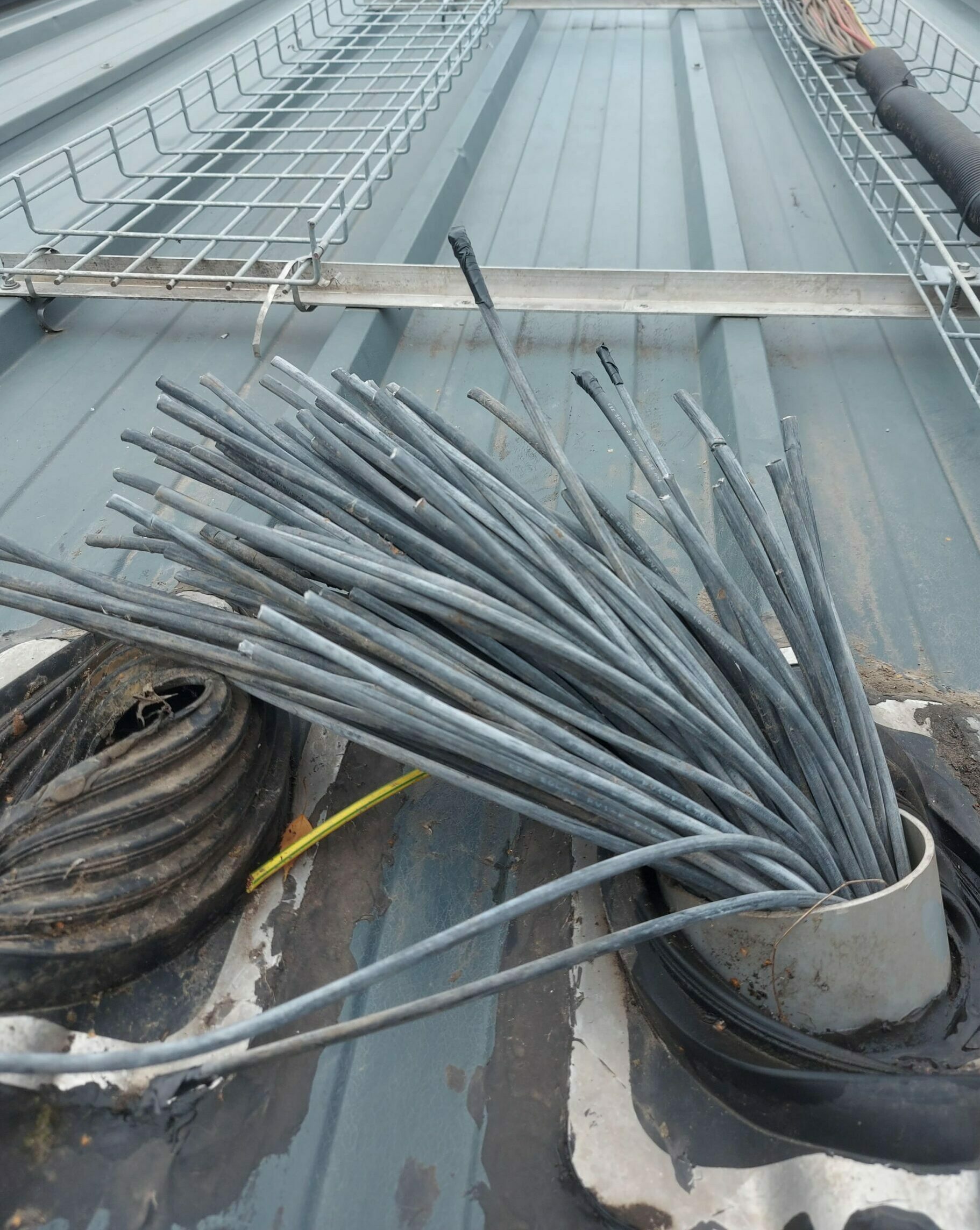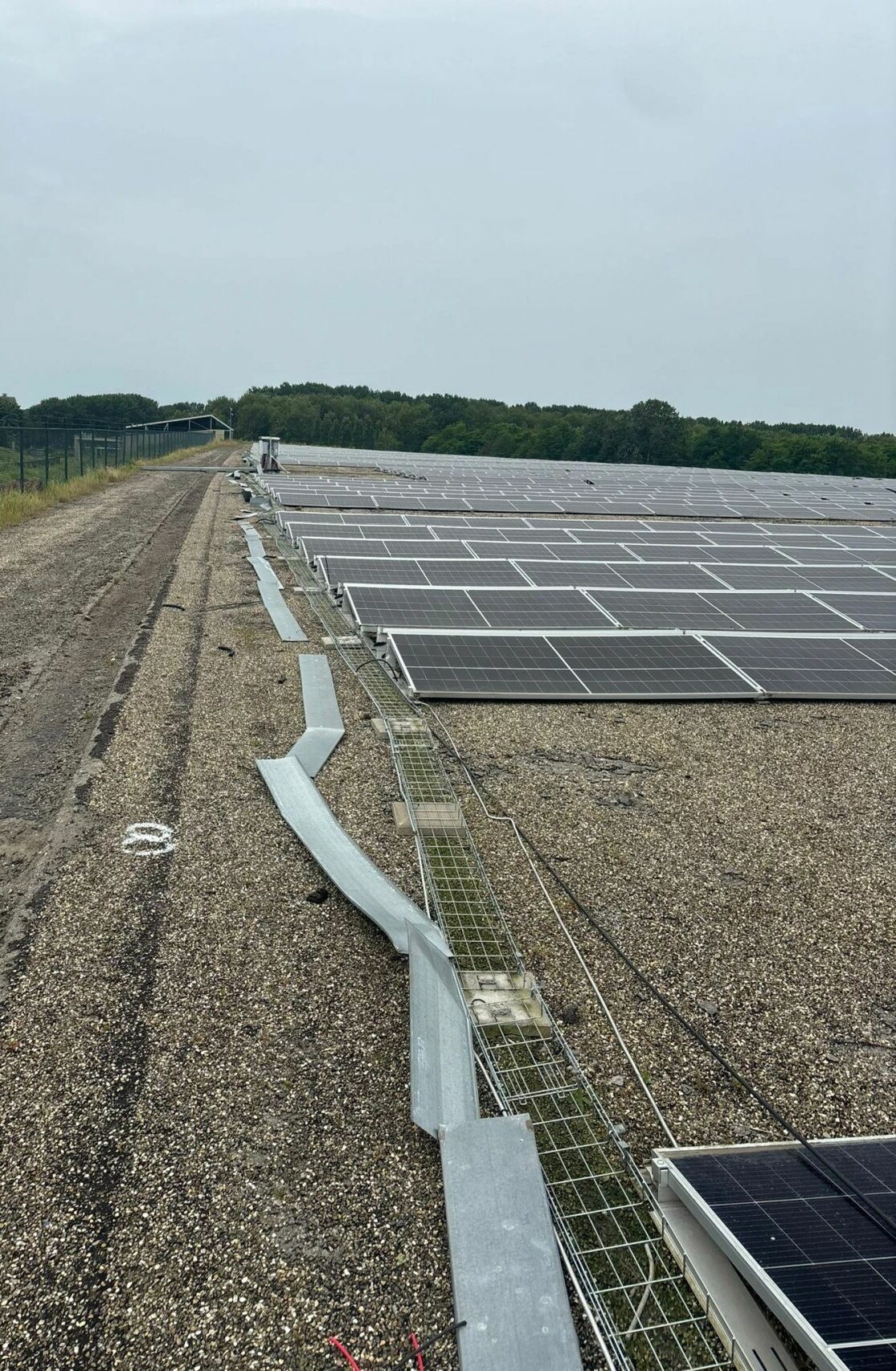Theft DC Cables at Solar Parks
Theft is an increasing problem in the solar energy sector. Surprisingly, it’s not the solar panels or inverters that are most often stolen, but rather the DC cables.
These cables contain copper, making them attractive to thieves. Theft can have significant financial and operational consequences.
What should you do if it happens to you?


What Should I Do After a Theft Incident?
After the theft of DC cables, it’s crucial to take immediate action to limit the damage. This means acting as a “responsible owner”: ensure the situation is safe and prevent further damage, both in terms of material loss and production downtime.
You do not need permission from your insurer to start repairs. It’s important to know that starting the repair does not automatically mean that all costs will be covered. The insurer will determine afterwards whether the damage is covered and how much will be reimbursed.

Make sure to document the theft carefully before starting repairs!
In the aftermath of a theft, it’s crucial to gather as much evidence as possible to support your insurance claim. Proper documentation helps to expedite the claims process. What to do?
- Carefully record how the damage occurred;
- Take clear photos of the damage, including the surroundings;
- Keep damaged materials until the insurer or loss adjuster gives permission to dispose of them;
- Contact your insurer as soon as possible to report the damage.
The insurer may appoint an expert afterwards to assess the damage. Ensure that all relevant information and evidence are retained until the expert has reviewed the situation.

When Will I Be Compensated and What If I Can’t Cover the Costs?
The insurer will only pay out after it has been established that the damage is covered and the exact amount of the claim has been determined. Often, this happens after repairs, as only then the full extent of the damage becomes clear.
If the damage is so extensive that you cannot cover the costs yourself, you can request an advance payment. This is always arranged in consultation with the loss adjuster and the insurer. The advance may cover, for example, 50% or 75% of the expected repair costs. The remaining costs will be reimbursed after the complete settlement of the claim.

Is It Necessary to Involve a Loss Adjuster?
Involving a loss adjuster is not always necessary. For minor damages, this is often not required, but for damages amounting to several thousand euros or more, an expert is almost always involved. You do not need to arrange this yourself: the insurer will assess whether an expert is needed and take care of the process.
It is essential to ensure that the expert has all the relevant information to properly assess the damage. Therefore, collect sufficient evidence, such as photos, damage descriptions, and invoices for repair work. This will help ensure a smooth and prompt assessment.

Tips to Prevent Theft
Besides knowing what to do when damage occurs, it is, of course, even better to prevent theft in the first place.
Consider the following measures:
- Install fences and security cameras around your solar park;
- Set up motion sensors and alarm systems;
- Use traceable markings on cables to deter resale;
Consider taking out our Solar Panel All Risks Insurance for financial peace of mind.

Security Requirements for Commercial Solar Installations
Want to optimally secure your solar installation?
Read our comprehensive whitepaper to comply with the stringent security requirements for solar installations set by insurers.
Download Security Requirements Guide!
Have Questions About Theft Damage or Preventive Measures?
Our specialists are ready to assist you!




